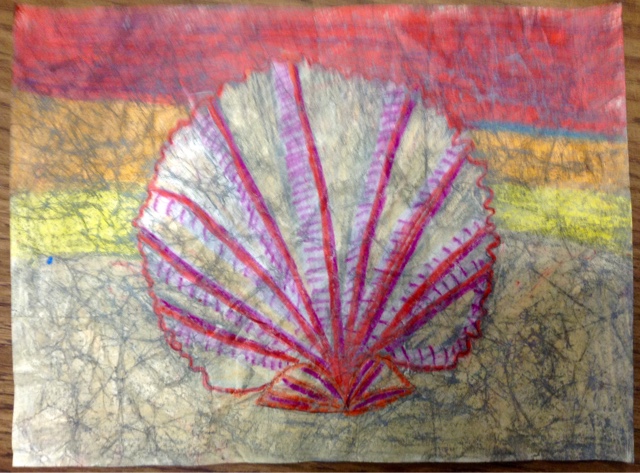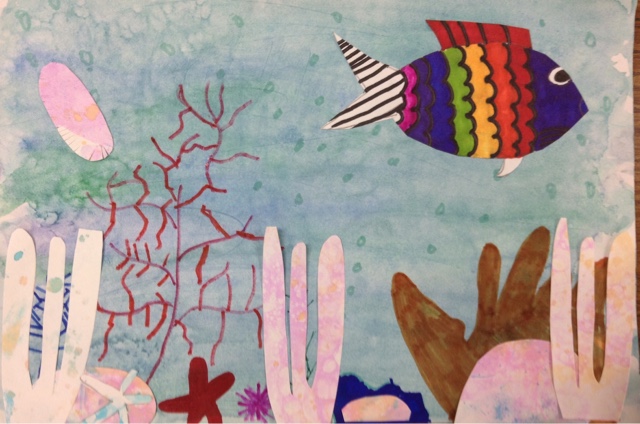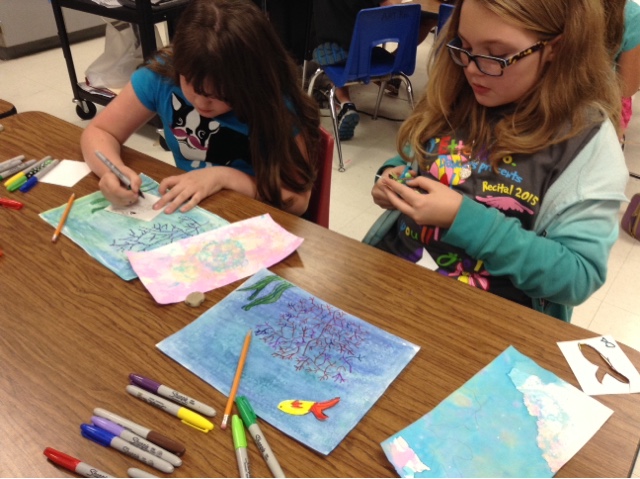I am actually playing a little bit of catch up. This summer was super busy and of course the beginning of school is always crazy, trying to get everyone's schedules lined out. This project was inspired by Georgia O'Keefe with my second graders. It was completed last spring.
We decided to do seashells in the larger than life way O'Keefe would have painted them. Although she does not have many shell paintings, there are a few. We spent several weeks just practicing and deciding on the shell.
Once the students decided on their shell, they drew them out on Manila paper. I find that Manila paper absorbs the paint just right without disintegrating the paper. I've used paper before where that happened.

After they have drawn out the shell, they were asked to use a peach, white and then they could pick a couple additional colors as accents.
Of course this becomes the hardest part of the project, coloring the crayon with thick layers. I usually try to demo what happens if thick layers aren't applied so they fully understand Mrs. Pruitt is not trying to torture them!
Once they have been checked, they are asked to crunch up their paper. Some kids love this part and others hate it. Especially when you have been coloring on it for days. But, usually the ones who don't want to do this step come around once they see the final step from their peers.
After the crumbling is done ( and hopefully they don't over do it, too much crumbling and the paper won't hold up to the liquid), and it is time for the black paint.
For this part, I set them up on a tray, with a sponge brush, tissues and a smock.
They drop only a few drops of the slightly watered down paint, spread it out with the sponge brush and wipe away with the tissue. I have them do this 4 times, once in each corner of the paper.
If they try to do the whole paper at the same time, the project comes out being very dark. Sometimes this can be fixed by spraying lightly with water and rewiping, but not always.



















































